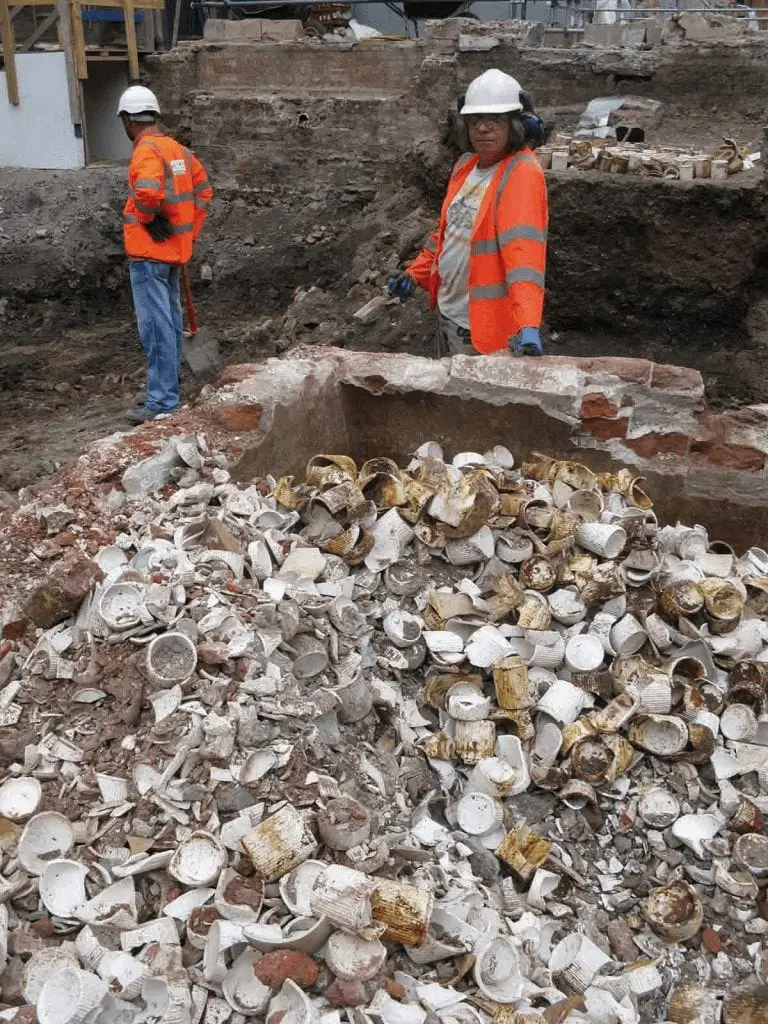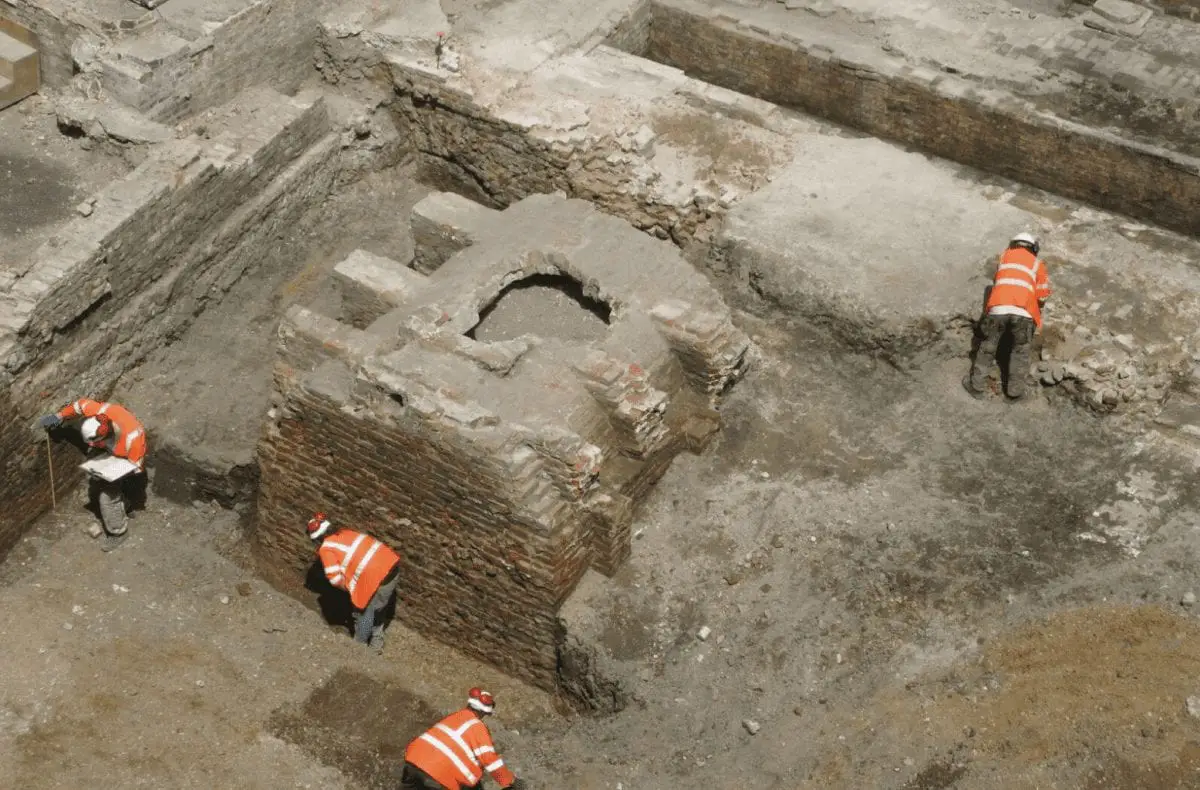Construction of the new Elizabeth line station by Crossrail at Tottenham Court Road has given archaeologists new insight into the origins of the British obsession with condiments.
- MOLA archaeologists discover over 13,000 well-preserved 19th and 20th century Crosse & Blackwell pickle pots, jam jars and essence bottles during archaeological excavations at the Crossrail site at Tottenham Court Road.
- The finds give a rare insight into the history of British food manufacture and development and offer a glimpse into the birth and development of products that still sit within kitchen cupboards today.
The finds include glass bottles for Mushroom Catsup, ceramic bung jars for mustard and Piccalilli and delicately painted white jars for Preserved Ginger. Archaeologists also found white earthenware jars for Pure Orange Marmalade, Household Raspberry Jam and Plum Jam, some of which still bare their original labels. They illustrate the ambitions of one of Victorian Britain’s most prolific and enduring enterprises and evidence the development of British tastes.
Nigel Jeffries, MOLA’s Medieval and Later Pottery Specialist and author of the book, said: “Excavations on Crosse & Blackwell’s Soho factory produced a large and diverse collection of pottery and glass related to their products, with one cistern alone containing nearly three tonnes of Newcastle made marmalade jars with stoneware bottles and jars. We think this is the biggest collection of pottery ever discovered in a single feature from an archaeological site in London.”
Archaeologists were given access to the site, next to Charing Cross Road in the heart of London’s West End, as Crossrail engineers built the new Elizabeth line station. Crosse & Blackwell manufactured, bottled and packaged their products on this site until 1921, which according to one Daily Graphic journalist led to “a very distinctive pungency to the surrounding atmosphere” and more directly, a “suffocating effluvium” according to the local Medical Officer for Health at the time.
The area was known for being a hive of industrial activity, but Crosse & Blackwell’s facilities appealed to companies like Lea & Perrins, who outsourced aspects of their business to the Crosse & Blackwell factory. Evidence of this has been found in the form of Lea & Perrins branded glass stoppers.

Highlights include:
• One Man’s Trash: Around 13,000 finds were recovered from a cistern on the site, a number of these were whole ceramics and pieces of glassware. They were used as landfill and therefore were protected and well preserved. Crosse & Blackwell had the Victorian entrepreneurial spirit and therefore the cistern was installed as part of the ongoing development and remodelling of the many buildings that they acquired around Soho Square to facilitate growth and development.
• Brands Preserved in Time , Celebrity chefs and Royal Endorsements: They were one of the first companies to receive a Royal Warrant from the newly crowned Queen Victoria in 1837 and also one of the first brands to use celebrity chefs and authors for the endorsement and development of their products and employed Alexis Soyer, Charles Francatelli and Signor Quallioti, chef to Napoleon, who introduced Crosse & Blackwell’s Piccalilli to the market.
• Assimilating Indian taste: Crosse & Blackwell sent a representative with the first troops shipped out to India by the East India Company; the recipes with which he returned led the firm to develop Captain White’s Oriental Pickle and Curry Powder and Abdool Fygo’s Chutney. The spirit of these new products echoes Britain’s expanding empire and reflects Crosse & Blackwell’s global reach.
Since Crossrail began construction in 2009, more than 200 archaeologists have unearthed over 10,000 objects from 40 locations, spanning 55 million years.





